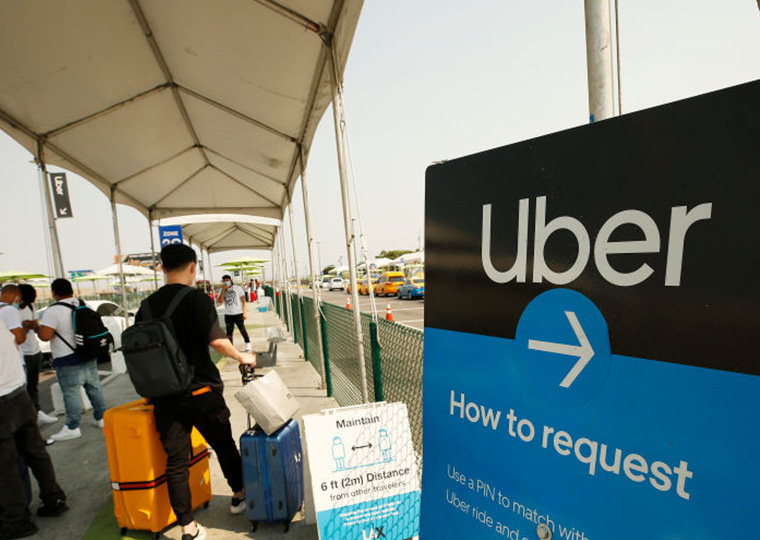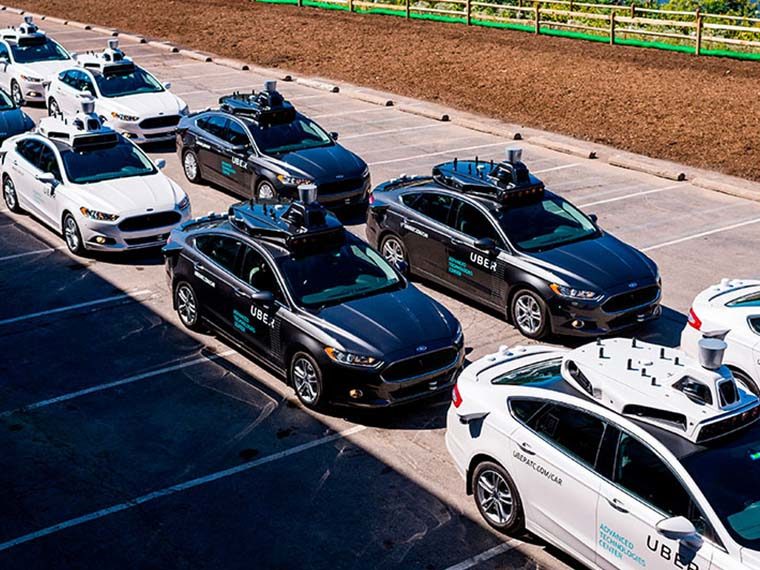Municipalities address increased traffic, pollution, taxi company bankruptcies and driver poverty
Over the past decade, app-based ride services like Uber and Lyft — fueled by billions of investor dollars, which has allowed them to sustain billions in operating losses — have filled the streets in hundreds of cities around the world. They’re popular with riders for their convenience and lower fares, but they’re also blamed for increasing traffic congestion, inflicting unfair treatment on their own drivers and contributing to bankruptcies and suicides among taxi operators.
Some governments have responded with regulations designed to ensure driver welfare, provide officials with data to monitor the services, raise revenue to maintain streets and support public transit, and limit emissions from the additional cars on the road. Are they effective? Are other measures needed?
To answer the questions, at least in part, researchers in China and the U.S. modeled the effect of rules that limit the number of ride-share drivers on the road and considered what would happen to incumbent taxi operators if the new rivals were left to grow unchecked.
Opt In to the Review Monthly Email Update.
They concluded that a laissez-faire approach to the newcomers would invariably lead to falling fares and depressed wages for ride-share drivers, while taxicab companies would find it impossible to compete and go out of business. The resulting lack of competition would enable the surviving companies to jack up fares, hurting consumers.
The researchers — Tsinghua University’s Jiayi Joey Yu, UCLA Anderson’s Christopher S. Tang, UC Berkeley’s Zuo-Jun Max Shen and Zhejiang University’s Xiqun Michael Chen — suggest that cities can avoid this outcome by adopting regulations that limit ride-share growth. They can do this in a few ways. Officials can place a strict cap on the number of licenses, a path New York City has taken. They also can impose minimum eligibility standards on ride-share drivers and their vehicles, as several cities in China have done.
A potentially effective policy, their findings suggest, may simply be to lower taxi fares if they are deemed too high. (In many countries, including China and Singapore, governments control taxi rates.) The policy would force ride-sharing companies to hold down their prices to be competitive. While that would mean lower wages for their drivers, it would also make driving less attractive and limit ride-share growth. Cab companies would survive, and consumers would enjoy lower prices. While there are tradeoffs (riders might face longer waits and the wages of taxi drivers would fall), such a balanced approach, the authors write, would “improve total social welfare.”
Ride-sharing services have spread rapidly in the last decade. Uber says it operates in more than 700 cities around the world, while Didi Chuxing Technology Co. serves more than 400 cities in China and has expanded to Latin America, Australia and Japan. Such rapid growth is expensive: Uber has raised more than $20 billion in venture funding and debt, plus another $8 billion from its initial public offering of stock last year, and continues to pile on losses — more than $15 billion to date (the figure includes more than $4 billion in stock compensation from its IPO). DiDi also has a high valuation, including a big stake from Uber, but has yet to turn a profit.
Increasingly, state and local officials are trying to impose rules on the services. They’ve even come up with a new bureaucratic category to describe the operations: transportation network companies. A recent report from NYU’s Rudin Center for Transportation lays out some of the different regulatory tactics: New York City requires the services to provide detailed data about every ride-share trip, charges a congestion fee to finance public transit and has placed a cap on new vehicle licenses. Beijing has the authority to regulate prices and has set emissions standards, while Los Angeles and San Francisco charge fees and collect data for airport access. Other cities, though, including Austin, Texas, adopted tough rules only to see them overturned or preempted by state lawmakers.
In their paper, published in Management Science, the U.S. and Chinese researchers considered only a specific type of regulation, the type that seeks to limit the number of ride-share drivers. Their model suggests that such a narrow rule can have significant effects.
They tested the model with data collected by DiDi service in Hangzhou. The city in early 2017 put in place rules that require ride-share drivers to pass special driving tests and have at least three years of driving experience. Cars have to be registered locally and to have been on the road for fewer than five years.
Based on their estimates of DiDi’s fares, they found that the average ride-share price was significantly higher than before the rules were adopted. And, more important, they were considerably higher than taxi fares. The result, the researchers write, suggests that under the new regulations, “the taxi industry can survive and compete with DiDi in the market.”
Featured Faculty
-
Christopher Tang
UCLA Distinguished Professor; Edward W. Carter Chair in Business Administration; Senior Associate Dean, Global Initiatives; Faculty Director, Center for Global Management
About the Research
Yu, J., Tang, C., Shen, Z-J., & Chen, X. (2019). A balancing act of regulating on-demand ride services. Management Science. doi: 10.1287/mnsc.2019.3351






